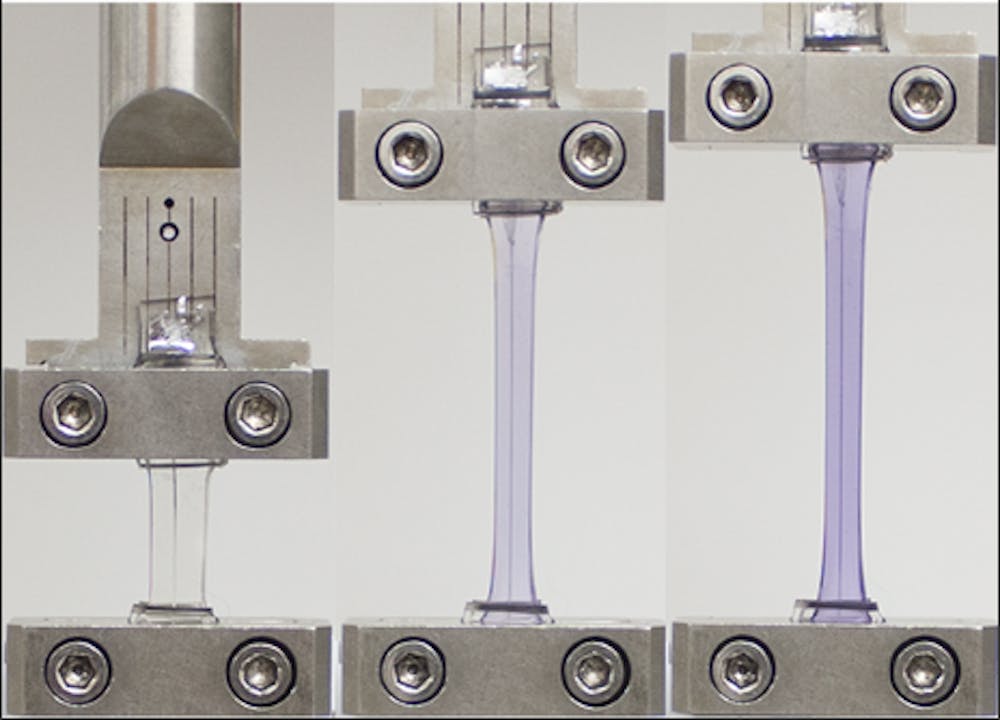Unlike the cold, hard robots that clank their way to world domination in old science fiction movies, soft robots mimic living organisms in flexibility, adaptability and movement. The future of technology is reverting to nature for its designs, with solid metal giving way to liquid variants in devices ranging from advanced hardware to everyday electronics.
In a collaboration between Duke's chemistry department, North Carolina State University engineering and University of California-San Diego's wave-material interaction group, researchers designed a liquid metal wire that changes color to warn the user that it is about to snap.
"Soft and stretchable electronics are promising for a variety of applications such as wearable electronics, human-machine interfaces, and soft robotics," the team's paper states. "These devices, which are often encased in elastomeric materials, maintain or adjust their functionality during deformation, but can fail catastrophically if extended too far."
Liquid metal conducts like a normal metal and can be used to design biomedical devices and wearable technology.
The challenge with using liquid metal in these devices, though, is that if it is stretched too much, it breaks. When these new technologies are taken out of the controlled experimental environment, there is a large chance that they will be inadvertently overextended.
Together, these researchers developed a novel solution aimed at giving feedback to users to prevent wires from getting too strained and breaking.
Combining color-changing technology from Duke chemistry researchers with liquid metal developments from NC State, the team produced a new composition with "mechanochromic function"—stretchable electronics with mechanically-induced colored warnings for when they are on the verge of breaking.
In a demonstration, Meredith Barbee—a graduate student in chemistry and the study's first author—pulled out a clear rubber strip with a silver line down the middle. The silver line embedded in the rubber was the liquid metal. The clear strip contained a substance called spiropyran—an organic compound known for its unique photochromic properties.
“When you pull, the tension on the polymer chains causes a reaction that changes the color of the rubber,” Barbee said.
With this special feature, users of the technology can actually see when they are putting excessive strain on the device and as a result avoid damage. To create it, the researchers used 3-D printing and vacuum filling, according to their paper.
This technology can not only be used as a warning to prevent breakage, but also as an indicator when a specified frequency of a wire has been reached.
Resonant frequency changes depending on how much metal wire is stretched, and a color change can show the desired frequency.
"The ability to engineer strain-responsive behavior across molecular, material and composite length scales offers considerable promise for soft devices," the paper states. "Here, molecular mechanochromism provides an indication that helps prevent damage and aid function."
Barbee explained that different architectures were developed to make the colorimetric response more instructive for how users will be notified when their devices are at risk.
“My favorites are the ones that display a message that says 'STOP,'” Barbee said.
Get The Chronicle straight to your inbox
Signup for our weekly newsletter. Cancel at any time.

